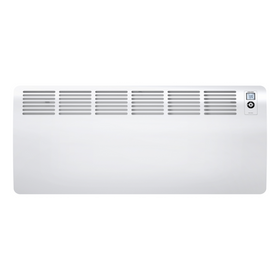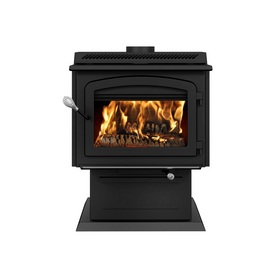
Sustainable Bedroom Trends in 2020
Last Updated: Mar 10, 2025With the growth in environmental consciousness, many have reexamined how their bedrooms can reduce their environmental impacts as a whole. There are many new trends in the sustainable bedroom industry, and here we will walk through the most popular ones and why you might want to consider them for your own home.
Generally, you want to look for products that are sustainable as a standalone product, are sourced and produced using fair practices, and can be disposed of responsibly.
Table of Contents
- Low/Zero VOC Paints
- Integrating Reclaimed Wood
- Bedding
- Indoor Plants
- Air Purifiers
- Smart Lighting

Low/Zero VOC Paints
Low, or even zero, VOC paints have been promoted in recent years. Before diving too deep into this popular paint choice, we want to discuss the basics first.
What is VOC? VOC stands for "volatile organic compound." As the name might suggest, these chemicals are known for off-gassing and are regulated by the government. Commonly found in paints (both interior and exterior), these chemicals can cause several health issues, including headaches and nausea. They can even damage your liver, central nervous system, and kidneys. To avoid these altogether, look for paints that have minimal or (more ideally) no VOCs.
The good news is that multiple popular name brands carry low VOC paint options. Behr, Benjamin Moore, and Sherwin Williams all provide low VOC paint options. To take it a step further, some possibilities for Zero VOC paints include Valspar's Simplicity line, Natura by Benjamin Moore, and SPARTAZERO by Dunn Edwards Paints.
Also, look for paints that are Green Seal Certified, GREENGUARD Gold Certified, Cradle to Cradle Certified, and ones that contribute to credits to LEED V4's home certification program. These will help to ensure that the paints have gone through third-party verification and are held to rigorous standards.
There are other paint options to consider, as well. Environmentally-friendly options such as recycled paint, ceramic paint, milk paint, and plant- or mineral-based paints have become a growing trend. While these may be more difficult to find, they offer entirely non-toxic alternatives to traditional interior paint.

Integrating Reclaimed Wood
Reclaimed wood for floors and furniture is another growing trend. Did you know that purchasing recycled wood products preserves natural resources, reduces waste, creates fewer toxins, and requires fewer paints and stains?
The use of reclaimed wood, of course, is not a new concept. Using wood from a past life with a new purpose is a relatively common practice. These projects can be DIY, or you can purchase reclaimed wood from a retailer. Reclaimed wood can be more expensive because it often requires a more labor-intensive preparation process than virgin wood. Also, keep in mind that depending on the wood's history, it may have been treated with VOCs, adhesives, or preservatives that could be harmful to your health. The more you know about the wood's history, the more you may be able to tell how it was previously treated and preserved.
Keep an eye out for products that are certified under the Forest Stewardship Council or the Rainforest Alliance. These certifications will help to ensure that the lumber is genuinely reclaimed and responsibly sourced. Certified reclaimed wood can also contribute points to LEED projects.

Bedding
There's much in the sustainable bedding realm to choose from. Fair-trade pillows, certified-organic mattresses, and comforters made with biodegradable-fill are just a few examples of what is available in the market. You spend a lot of time in bed - about a third of your day - why not invest in bedding that will contribute to your overall health?
Eco-friendly bedding can include naturally antibacterial and moisture-wicking properties and are often easier to recycle. Organic cotton has become quite common as it is affordable, breathable, easy to clean, and is produced without fertilizers or pesticides. Do keep in mind that organic cotton, unfortunately, requires substantially more water to yield than regular cotton. However, this can be an excellent reason to make conscious efforts to reduce your water footprint in other parts of the home, like your kitchen or bathroom.
Organic hemp, linen, and latex bedding are other options for those looking for healthy, sustainable bedding. Also available on the market is bedding made from eucalyptus, birch, and beech trees. Eucalyptus bedding, in particular, has a smaller environmental impact than cotton, requiring ten times less water to cultivate. Eucalyptus is also resistant to mold, dust, and insects. It also promotes a healthy immune system and relaxation.
Both West Elm and Boll and Branch are known for their organic bedding lines. Some bedding can even be made from recycled materials that further reduces your environmental impact. Both Buffy and Under the Canopy sell bedding products made from recycled water bottles.
In terms of mattresses, we are supposed to replace our mattresses every ten years. Some chemicals commonly found in beds, including formaldehyde and polyurethane, have been attributed to health problems, including depression and cancer. Make sure to look for sustainable mattresses that are within your ideal budget. There are multiple bedding certifications to look for, including the Global Organic Textile Standard, Cradle to Cradle certification, Standard 100 by OEKO-TEX, and Fair Trade.

Indoor Plants
Want to integrate plants into your home? Interior plants are not only aesthetically pleasing but can also greatly benefit your home's air quality and promote relaxation. Here we'll discuss a few plant options to consider specifically for your bedroom.

Aloe Vera
Many know about aloe vera's benefits in the skincare world, but were you aware that these plants can significantly improve your bedroom air quality? Unlike many plants, aloe vera emits oxygen at night versus during the day, benefitting you while you sleep. Not to mention, aloe vera is extremely easy to care for, even for those without 'green thumbs.'

English Ivy
English ivy can be a lifesaver for those who suffer from allergies. Commonly found growing on the exterior of buildings, they can actually be fantastic additions to your bedroom. They reduce the airborne mold in a room and do not require direct sunlight.

Lavender
Lavender can promote relaxation, reduce your blood pressure and heart rate, and help you sleep. Don't want to care for a live plant? Consider opting for a sachet of lavender leaves in your pillowcase to help you sleep naturally.

Snake Plant
A favorite for those who want to keep plants alive with minimal effort is the snake plant. They are aesthetically-pleasing, easy to care for, and will filter toxins found in your bedroom. Win all around!

Rosemary
While not typically thought of as an herb fitting for a bedroom, rosemary can filter the air, and studies have shown that it can even improve your memory. Not to mention, it is excellent for cooking, and you can snag a sprig or two during dinner prep.

Spider Plant
A classic houseplant, the spider plant is fast-growing and easy to care for. It is also straightforward to propagate if you want to have multiple spider plants throughout the house.
Shop All Special Offers
Shop Special Offers on vetted Home Improvement products at low prices while supplies last.

Stiebel Eltron CON 300-2 Premium Wall-Mounted Convection Heater - 202030
Stiebel Eltron
In Stock

Stiebel Eltron Accelera 300 E Heat Pump Water Heater
Stiebel Eltron
In Stock

Drolet HT-3000 Wood Burning Stove DB07300
Drolet
In Stock

Victory Range Hood Sunset 600 CFM White Flush Ceiling Mount Dimmable LED Range Hood
Victory Range Hoods
In Stock

Stiebel Eltron DHC-E 8/10-2 Plus Point-of-Use Electric Tankless Water Heater - 202145
Stiebel Eltron
In Stock

Stiebel Eltron CON 150-1 Premium Wall-Mounted Convection Heater - 202026
Stiebel Eltron
In Stock

Stiebel Eltron Accelera 220 E Heat Pump Water Heater
Stiebel Eltron
In Stock

Innovative Dehumidifier IW25-5 In-Wall Dehumidifier
Innovative Dehumidifier
In Stock

Victory Range Hood Sunset 600 CFM Flush Ceiling Mount Dimmable LED Range Hood
Victory Range Hoods
In Stock

Drolet Bistro Wood Burning Cookstove DB04815
Drolet
In Stock

Air Purifiers
If you would like to purify your bedroom's air more aggressively than with house plants, you could consider purchasing an air purifier. Over half of adults report having difficulty sleeping through the night, according to the American Psychological Association (APA). Sleep problems are often attributed to poor indoor air quality. Astounding, indoor air is many times more polluted than exterior air.
The best air purifiers are ones with true HEPA filters and carbon filters, so keep an eye out for those options and add-ons. Air purifiers range in price, size, aesthetics, and even sound levels. There are many air purifiers available on the market, so we took a look at online reviews and testimonials of the most popular ones.
2020 Air Purifier Recommendations
Based on our recent research, it seems as though the Coway AP-1512HH is the frontrunner in the market. While it is more substantial than a lot of models (at 12.3 pounds), it is impressively quiet and relatively compact. It has a four-stage filtration system to ensure that it is emitting the highest quality air possible. With a pre-filter, activated carbon filter, true HEPA filter, and an ionizer, you can rest assured that it is doing its job. It also includes an 'eco mode,' meaning that it shuts off the fan when it does not detect pollution in the air.
A few other options include the very affordable Levoit LV-H126, the incredibly silent and lightweight Blue Pure 411, and the powerfully filtering Aeramax 100.
Given the high costs often associated with air purifiers, make sure to do your research before purchasing a model. Remember that the filtering system is more important than the aesthetics, and you want something quiet for when you are sleeping.

Smart Lighting
Another major trend in the sustainable bedroom industry is smart lighting. This technology is exciting because it is always evolving. Smart lighting takes you a step beyond energy-efficient lighting. As a baseline, almost all smart lighting use LED light bulbs, so you know that they are more efficient right off the bat.
There are many additional benefits of smart lighting. They can be controlled remotely, so if you forgot to turn off a light on your way out to work, you can open the phone app and turn it off. This will also give you peace of mind while on vacation. By using scheduling features, you can give the impression that someone is home while you're away.
A primary feature of many smart bulbs is that they can dim, so you won't need to install dimmer switches. They can also change colors at your request. This could be beneficial in the bedroom when you may want to change the bulb color an hour before bed to help increase melatonin levels. And best of all, some smart bulbs can even play music or sound effects! Built-in sound machine, anyone?
There are hundreds of smart light bulbs to consider for your bedroom. Most smart lights can connect to smart home products and smartphone applications. If you are interested in this 2020 building trend, take some time to research the available options and discover what features speak the most to you and your needs.
Maria Saxton
Located in Roanoke, Virginia, Maria Saxton holds a Ph.D. in Environmental Design and Planning from Virginia Tech. She works as an Environmental Planner and Housing Researcher for a local firm specializing in Community Planning, Architecture, Landscape Architecture, and Historic Preservation. Her dissertation explored the environmental impacts of small-scale homes. She serves as a volunteer board member for the Tiny Home Industry Association.
